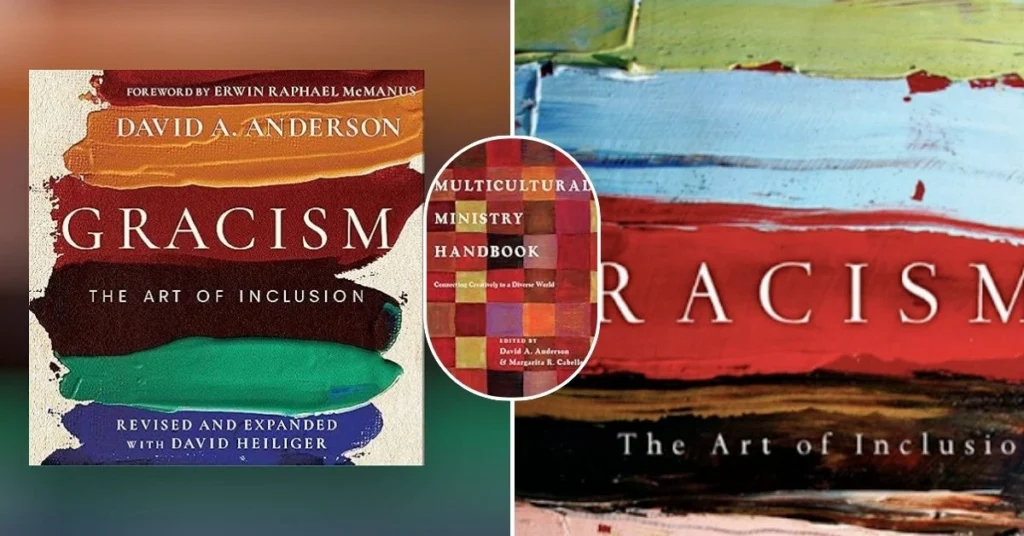Introduction to Gracism and the Importance of Inclusion
In a world that often feels divided, the concept of inclusion is more important than ever. Gracism—the art of extending grace to others—offers a fresh perspective on how we can embrace diversity in all its forms. The audiobook “Gracism The Art of Inclusion Audiobook” dives deep into this transformative ideology, guiding listeners through the nuances and power of inclusivity. Imagine a society where everyone feels valued and respected, regardless of their background or beliefs. This journey toward understanding starts with recognizing our differences as strengths rather than obstacles. Let’s explore what it means to practice gracism and how it can revolutionize our communities for the better.
Understanding Diversity and Its Impact
Diversity goes beyond mere differences in race or gender. It encompasses various dimensions, including age, sexual orientation, and cultural backgrounds. Each layer adds richness to our communities.
Understanding diversity is essential for fostering a more inclusive society. When people from different walks of life come together, they bring unique perspectives and experiences. This leads to innovative solutions to problems that affect us all.
Moreover, embracing diversity nurtures empathy. By engaging with diverse voices, we learn compassion and understanding—qualities that are vital in today’s interconnected world.
The impact of diversity can be seen across multiple sectors: business performance improves as teams become more creative and adaptable. Education thrives when students learn from varied viewpoints.
Recognizing the value of every individual is crucial in creating an environment where everyone feels accepted and valued.
The Benefits of Embracing Inclusion in Society
Embracing inclusion in society brings a wealth of benefits that can transform communities. Diverse perspectives foster creativity and innovation, leading to better problem-solving. When everyone feels valued, collaboration flourishes.
Moreover, inclusive environments enhance mental well-being. Individuals who feel accepted are more likely to engage positively with others. This sense of belonging reduces stress and promotes happiness.
Economically, companies embracing diversity often see improved performance. A diverse workforce can tap into broader markets and connect with different customer bases more effectively.
Additionally, social cohesion strengthens through inclusion. By celebrating our differences rather than shying away from them, we build bridges instead of walls. This unity creates a vibrant culture where everyone thrives together.
Inclusion also empowers marginalized groups by giving them a voice in decision-making processes. Everyone has unique experiences worth sharing; when these stories are heard, society grows richer for it.
How to Practice Gracism: Tips and Strategies
Practicing Gracism requires intentionality and heart. Start by actively listening to others, especially those from different backgrounds. This builds understanding and fosters connection.
Next, challenge your own biases. Reflect on your thoughts and attitudes towards diversity. Awareness is the first step toward change.
Engage in community events that celebrate various cultures. Attend workshops or seminars focused on inclusion; these experiences can broaden your perspective significantly.
Encourage open dialogue within your circles about race, ethnicity, and inclusion. Create a safe space for discussions where everyone feels heard.
Lead by example—show kindness and acceptance in everyday interactions. Small actions can ripple outward, inspiring others to embrace Gracism as well.
Examples of Successful Gracism Initiatives
Many organizations have embraced Gracism principles to foster an inclusive environment. One noteworthy example is a tech company that implemented mentorship programs for underrepresented groups. This initiative not only enhanced diversity but also drove innovation by tapping into varied perspectives.
Another successful case comes from educational institutions. A university established a task force dedicated to promoting racial and cultural understanding on campus. Through workshops and community events, they bridged gaps between different student groups, creating a more cohesive atmosphere.
Additionally, many local governments are incorporating Gracism into their policy-making processes. By ensuring diverse voices are heard in decision-making, they work towards equitable solutions that benefit all citizens.
Each of these initiatives showcases how the application of Gracism can lead to meaningful change across various sectors. Their success stories inspire others to adopt similar strategies for inclusivity and understanding.
Overcoming Challenges and Obstacles in Promoting Inclusion
Promoting inclusion often faces various challenges. One significant hurdle is unconscious bias, which can manifest in everyday interactions. Recognizing these biases requires self-awareness and intentionality.
Another obstacle is resistance to change. Many individuals may cling to traditional views or practices. Education plays a key role in addressing this reluctance, fostering open dialogues that encourage acceptance of new perspectives.
Resource limitations can also impede inclusion efforts. Organizations might struggle with insufficient funding or personnel dedicated to diversity initiatives. Here, collaboration becomes vital; pooling resources with like-minded groups can amplify impact.
Measuring success is tricky without clear metrics. Establishing benchmarks helps track progress and maintain momentum in promoting an inclusive culture across communities and workplaces alike.
Each challenge presents an opportunity for growth and innovation within the framework of gracism, paving the way for more inclusive environments where everyone feels valued and respected.
Conclusion: The Power of Gracism in Creating a More Accepting and Diverse World
Gracism, as explored in the Gracism The Art of Inclusion Audiobook, serves as a powerful tool for fostering acceptance and diversity. It reminds us that inclusion is not just an ideal but a necessary practice. By embracing differences, we enrich our communities and create environments where everyone feels valued.
The principles of Gracism encourage open dialogue and mutual respect. They empower individuals to celebrate uniqueness while also recognizing shared humanity. This dual focus on individuality and community can transform workplaces, schools, and neighborhoods into spaces where collaboration thrives.
As we navigate challenges related to inclusion, the lessons learned from this Gracism The Art of Inclusion Audiobook become even more vital. They offer practical strategies for dismantling barriers and promoting understanding among diverse groups. Each action taken toward inclusivity builds momentum for change.
By championing Gracism in our daily lives, each of us contributes to a culture that prioritizes acceptance over division. This collective effort paves the way for future generations to inherit a world rich with empathy, cooperation, and diversity—a world worth striving toward every day.
Dive deeper into Curtis Wilson Crowe.





